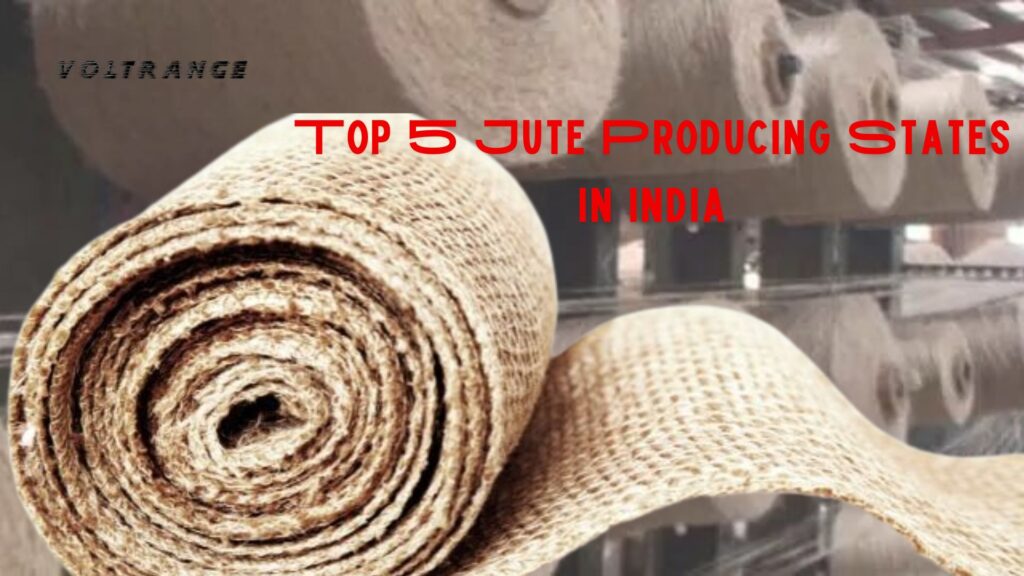
Top 5 Jute Producing States in India
Jute Producing States in India: Jute, often referred to as the “golden fibre,” is a highly valued plant known for its versatility and environmental benefits. Grown extensively in Eastern India, jute thrives in hot and humid climates, particularly in regions like the Ganga Delta. From 2022 to 2023 (until July 2022), India produced approximately 384.1 lakh tonnes of jute products, while in 2021-2022, production reached around 1,080 lakh tonnes. Globally, jute is the second most important plant fibre, after cotton, in terms of production, usage, and availability.
Let’s take a closer look at the top five jute-producing states in India and understand their contribution to the country’s jute industry.
Top 5 Jute Producing States in India
- West Bengal
West Bengal is the top jute-producing state in India, accounting for over 80% of the country’s total jute output. The state’s fertile soil, abundant water from the Ganges and Brahmaputra rivers, and favorable climate make it an ideal region for jute cultivation. Some of the major jute-producing districts in West Bengal include Murshidabad, Nadia, and North 24 Parganas. The state is also home to a large number of jute mills, contributing significantly to India’s jute production. Jute Producing States in India
- Bihar
Bihar ranks as the second-largest jute producer in the country. The Ganges River and its tributaries provide ample water for jute farming, and the state’s flat, fertile plains offer the perfect environment for growing this crop. Key jute-growing areas in Bihar include Vaishali, Saran, and Muzaffarpur, which are known for their high jute output.
- Andhra Pradesh
Andhra Pradesh is the third-largest jute-producing state in India. The Godavari and Krishna rivers, along with favorable climatic conditions, make this state an ideal region for jute cultivation. The main jute-producing districts in Andhra Pradesh are East Godavari, West Godavari, and Krishna. These regions contribute significantly to India’s jute industry. Jute Producing States in India
- Assam
Assam is the fourth-largest jute producer in India, with the Brahmaputra River Valley providing ideal conditions for jute farming. The state’s favorable weather and abundant water resources contribute to its high jute production. Major jute-growing areas in Assam include Dibrugarh, Jorhat, and Nagaon. Assam is also known for producing organic jute, which has gained popularity in global markets.
- Odisha
Odisha is another important state for jute cultivation, particularly in its coastal regions and river deltas. The humid climate and well-irrigated land make Odisha suitable for jute farming. Key jute-growing districts in the state include Balasore, Bhadrak, and Cuttack. The government of Odisha has also implemented various initiatives to support jute farmers and boost jute production. Jute Producing States in India
Conclusion
The top five jute-producing states in India—West Bengal, Bihar, Andhra Pradesh, Assam, and Odisha—play a crucial role in sustaining the country’s jute industry. Jute not only supports the livelihoods of countless farmers but also generates significant revenue through exports. Its eco-friendly nature, durability, and affordability make jute an increasingly popular choice for consumers worldwide. As global demand for sustainable products rises, the future of jute farming in India looks promising, offering farmers the opportunity to thrive in this growing market. Jute Producing States in India
FAQs about Jute Producing States in India
What makes jute farming in India successful?
Jute farming in India is successful due to the country’s hot and humid climate, particularly in regions like the Ganga Delta, which offers ideal growing conditions. The presence of fertile soil and abundant water sources from major rivers like the Ganges, Brahmaputra, Godavari, and Krishna also plays a significant role.
Which state produces the most jute in India?
West Bengal is the largest producer of jute in India, contributing over 80% of the country’s total jute production. Its favorable climate, fertile land, and access to water from the Ganges and Brahmaputra rivers make it an ideal location for jute cultivation.
Why is jute referred to as the “golden fibre”?
Jute is called the “golden fibre” because of its natural golden-brown color, its versatility, and its importance in the textile industry. It is widely used for making eco-friendly products like bags, ropes, and packaging materials.
What are the benefits of jute production for India’s economy?
Jute production supports millions of farmers and workers in India, particularly in states like West Bengal, Bihar, and Assam. It generates significant export revenue and is an eco-friendly alternative to synthetic fibres, aligning with global trends towards sustainability.
Is jute an environmentally friendly crop?
Yes, jute is highly eco-friendly. It is biodegradable, requires fewer pesticides and fertilizers compared to other crops, and helps improve soil quality. Its production process also generates less pollution, making it a sustainable choice for a wide range of products.





More Stories
which of the following statements is true about education and lifetime earnings? Complete Guide Here
Statekaidz.com: Education with Fun For Kids 2025
Top 5 Richest States in India by GDP